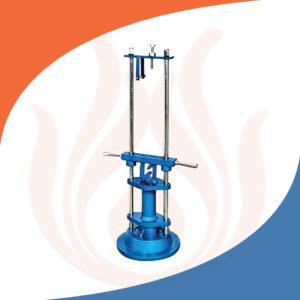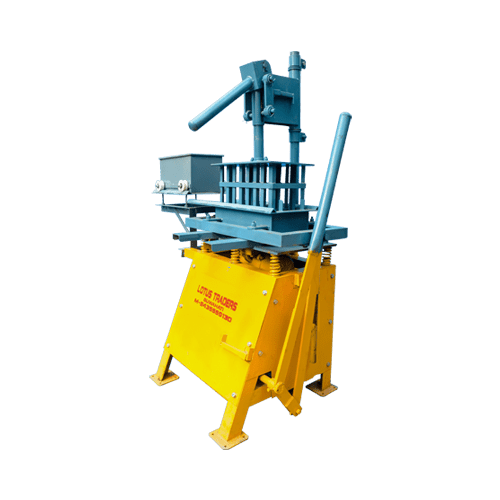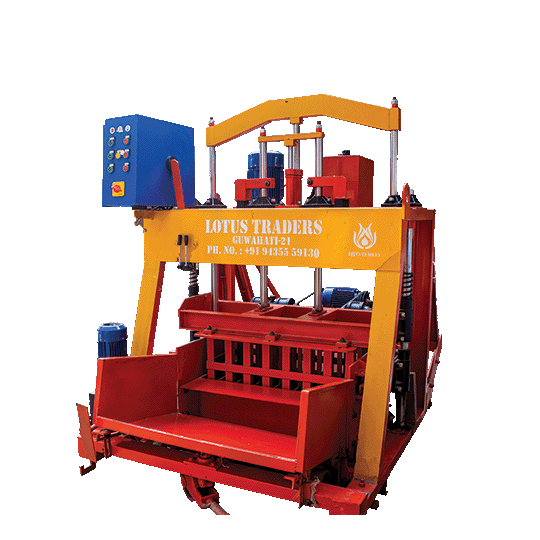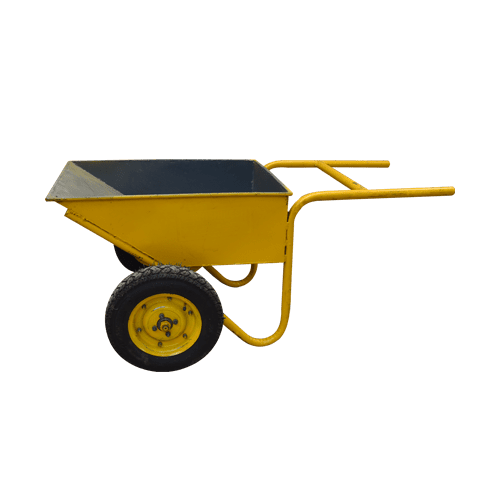Aggregate Impact Value
- High Quality Materials
- Compliance With Standards
- Clear Product Information
- Warranty & Support
- Product Testing & Certification
- Delivery & Policy
- Ask a Question
- Estimated Delivery: 5 Days – 10 Days
- DESCRIPTION
FEATURE | SPECIFICATION |
Cylindrical Container size | 150mm +/-0.5mm dia x130mm to 140mm high |
Base plate | 200 to 230mm/sqr x 6mm thick |
Plunger | 148mm +/-0.5mm dia x 100 to 115mm high |
Tamping Rod | 16mm dia x 600mm long |
What is Aggregate Impact Value?
The Aggregate Impact Value (AIV) apparatus is a unique tool that specializes in measuring the impact resistance of certain aggregates. This aggregate is generally coarse – the primary material used in building roads and pavements.
The Aggregate Impact Value involves applying a standard impact load to an aggregate sample. If the sample cracks under a higher AIV load, it means the aggregate is not strong enough to tolerate heavy impact. However, if the sample has a lower AIV value, it is the perfect construction material, as it will provide better performance and long-term durability to projects.
There are also other tests to assess the quality of aggregates, such as the Aggregate Crushing Value (ACV) method and the Los Angeles Abrasion Testing Machine, but this article will solely focus on the Aggregate Impact Value Test. Read on for the finer details!
Table of Contents
What Are the Key Features of the Aggregate Impact Value?
What key components are necessary for checking the impact value of aggregate? There are usually four features this method needs, all of which you easily find in the market. Let us go through each apparatus or feature in a simplified list:
First : an impact testing machine like the Aggregate Impact Value apparatus is necessary for applying a standard impact force to the aggregate sample (15-20 joules.)
Second : operators need a cylindrical steel cup upon which the aggregate sample rests, and on which the impact force falls.
Third : a tamping rod is a convenient accessory for doing preliminary compaction on the aggregate sample before subjecting it to the impact test.
Fourth : sieves are also necessary to determine the percentage of aggregate that passes the impact test without breaking or cracking up. These sieves usually range between 2.36 mm to 1.18 mm.
In construction practice, if the Aggregate Impact Value falls between 10 to 30 percent, you can consider the aggregate sample a success! But this is not entirely applicable to all situations, because customized project specifications can demand different AIV ranges. That is why it is essential to go through the relevant standards or guideline before settling down on an AIV range for any particular project.
How Does the Aggregate Impact Value Work?
There is a standard procedure to carrying out the Aggregate Impact Value test. This shock-resistant test is very important to the field of civil engineering to ensure the supreme quality of the soil below large swathes of infrastructure. The materials required to carry out the AIV test are the impact testing machine, a cylindrical steel cup, a tamping road, a weighing balance, sieves, an oven, and of course – coarse aggregate samples!
We have watered down the extensive Aggregate Impact Value Test Procedure in a simple list below:
- First, collect the coarse sample needed for the test. This sample has to undergo thorough drying at an oven between temperatures of 100-110° The aggregate has to stay completely dry so that it is perfect for testing!
- Second, it is crucial to weigh and record the dried aggregate sample to around 0.1% accuracy of the original weight.
- Third, it is time to prepare the aggregate sample. Operators place the aggregate in the cylindrical cup and compact it using the tamping rod. 25 strokes are enough to ensure even distribution over the aggregate’s surface. Keep in mind the cup also has to stay clean and dry!
- Fourth, this is the most crucial step of the Aggregate Impact Value Test. Once the cup gets placed in its position, operators release the plunger so that it falls freely and strikes the aggregate sample. The applied impact energy usually ranges between 15 to 20 joules.
- Fifth, once the impact test is over, it is time to remove the aggregate from the cup and let it pass through a 2.36 mm sieve to separate the finer particles. Then, the material that passes through the sieve undergoes weighing.
- Finally, the Aggregate Impact Value emerges using the following formula:
AIV = (Weight of material passing through the sieve / Original weight of aggregate) x 100
Note: A lower AIV value will mean the aggregate sample has better impact resistance. This value is a percentage, and it clearly indicates how competent the aggregate is for construction projects.
What Are the Advantages of the Aggregate Impact Value ?
There are many advantages to using an Aggregate Impact Value apparatus. First, it provides quality control and ensures the applicable aggregate meets engineering standards. This can improve the longevity of construction projects!
It also offers standardized testing, which makes it a viable component across different laboratories and projects. Comparing aggregates is much easier and cost-effective as a result. An additional quality underlying the AIV apparatus is that it is relatively easy to use and give you results without wasting too much time. Professionals can make timely decisions and keep a construction project up to speed!
Other major advantages you can avail from this wonderful equipment are data for material selection, research and development stats, and its unwavering compliance to industrial standards.
Why Buy From Lotus Traders?
We have come to a conclusion that the Aggregate Impact Value Apparatus is an indispensable tool for industrial experts to determine the quality of aggregates and decide if they are fit for a certain project or not. If you are looking for the best AIV apparatus this saturated market has to offer, you will find the best models for sale at Lotus Traders!
Expect a traditional Aggregate Impact Value Testing Machine to cost around Rs. 5500 per piece, with a total capacity of 450 KN. However, a more premium variant will charge you across the Rs. 11, 000 marks, with its additional features more than making up for your testing needs. There are variants you can avail between the two price ranges, with another Aggregate Impact Tester costing around Rs. 8, 500. Therefore, depending on region, this machine traditionally costs between Rs. 5000 to Rs. 13, 000.
When you purchase a product from Lotus, we try to understand your project’s specific needs and go through all the AIV values required for the intended use. Only then, we recommend you with the exact Aggregate Impact Value Test Apparatus you need, and will offer you the best models from our Aggregate Impact Value Apparatus price list!
Frequently Asked Questions
The Aggregate Impact Value (AIV) test is useful for finding out the impact resistance of coarse aggregates so that they can undergo fit or unfit status for certain applications, like belonging in the soil underneath large infrastructure, or providing a stable base for roadways, runways, and pavements, etc.
The apparatus for the Aggregate Impact Value Test includes an impact testing machine, a cylindrical steel cup, a tamping rod, and sieves that range between 2.36 mm to 1.18 mm.
Impact value of aggregate originates using the following formula:
AIV = (Weight of material passing through the sieve / Original weight of aggregate) x 100
The resultant percentage from the equation has to usually exist between 10 to 30 percent.
The Aggregate Impact Value Apparatus is a fine tool for determining the impact resistance value of coarse aggregates. Get the best models from Lotus Traders today!
The Aggregate Impact Value test has to produce a general result that falls in the range between 10 and 30 percent. However, different projects across several sectors require different percentages for determining the quality of the aggregate, so this range is not a universal truth.
The Aggregate Impact Value test seeks to understand the impact resistance an aggregate sample can provide, so that it can apply its efficiency for certain construction projects. A lower resistance value usually means the aggregate is fit for usage.
The aggregate crushing value is the ratio between the weights of fines passing the specified IS sieve to the overall aggregate sample weight.
Aggregate Impact Value stands for describing the toughness of aggregates. Meanwhile, the Aggregate Crushing Value stands for the resistance to crushing under the applied load.
Yes, Lotus Traders has a big catalogue of the best Aggregate Impact Value Apparatus models, so if you are actively looking for one in the market, visit our shop today!
The Aggregate Impact Value Apparatus is available for sale at Lotus Traders, a reputable company who has embraced the construction industry for over fourteen years! If you are in the market for any kind of aggregate testing equipment, drop a call on our number today, or browse through our website to take a look at all the exclusive products we have for you!















